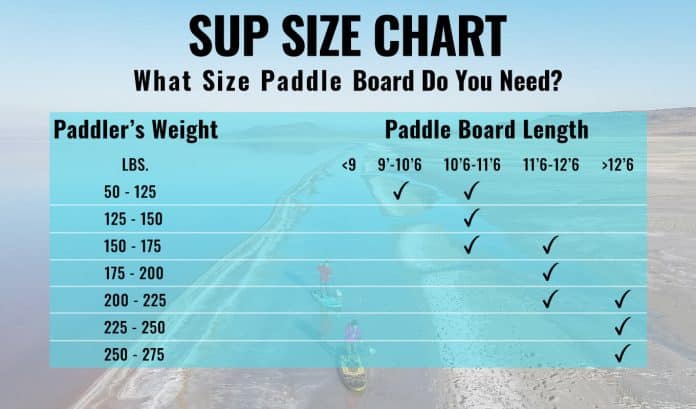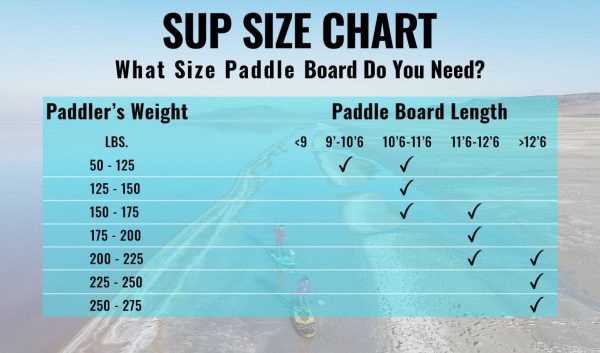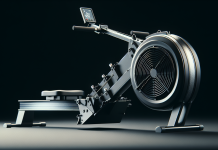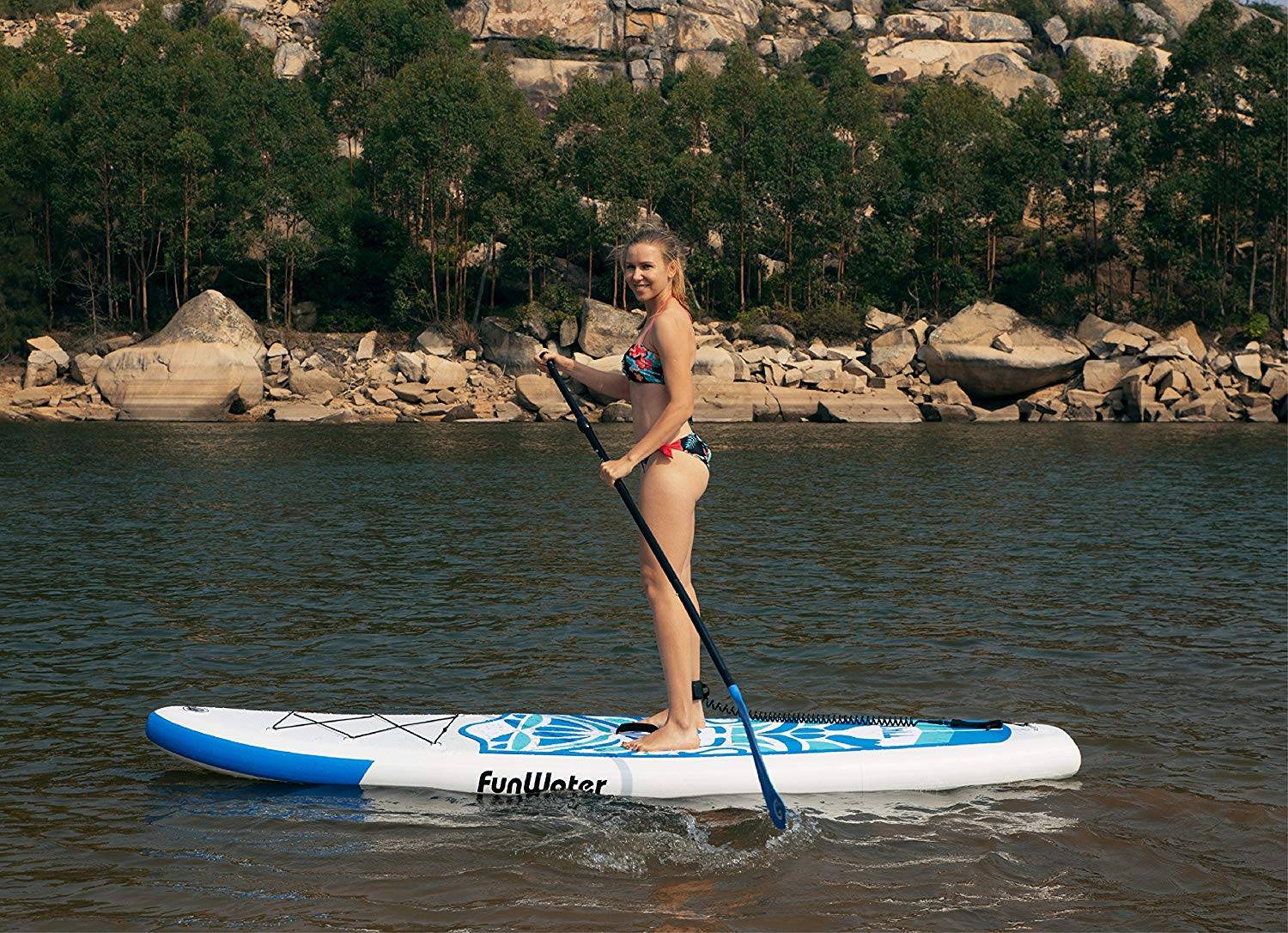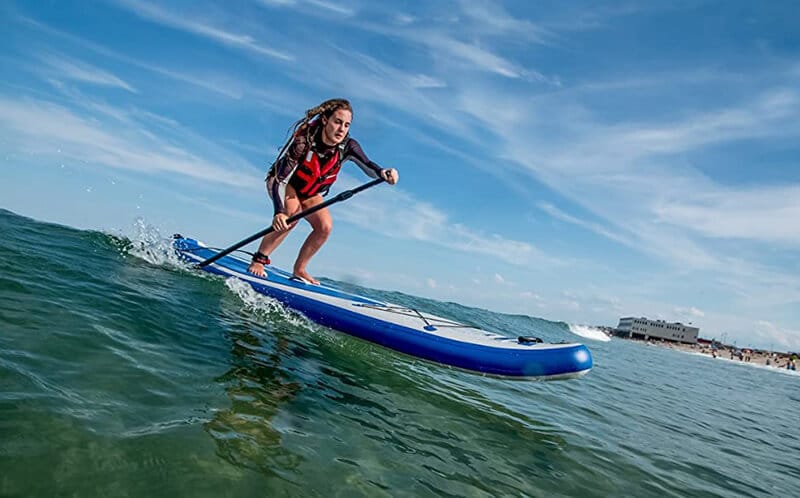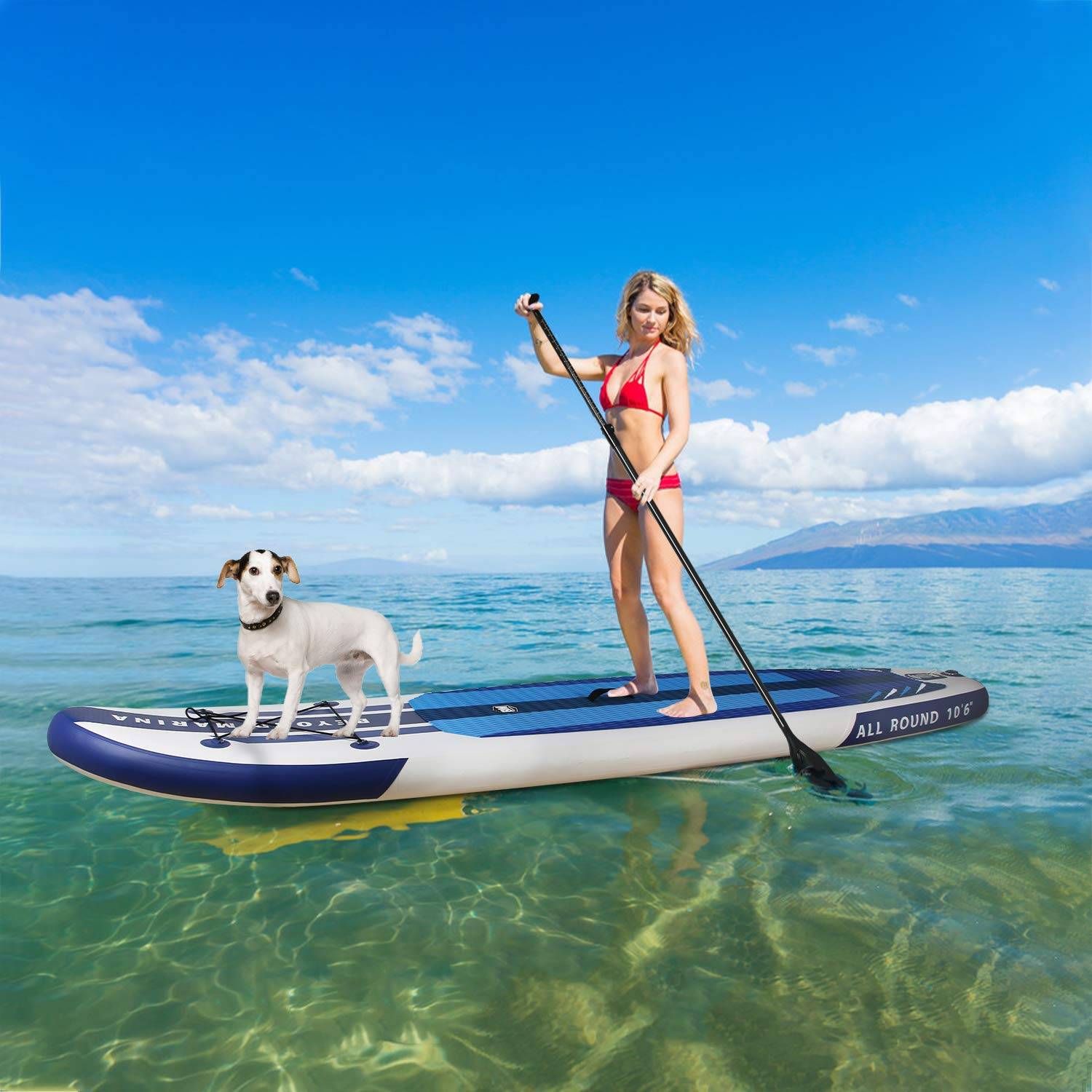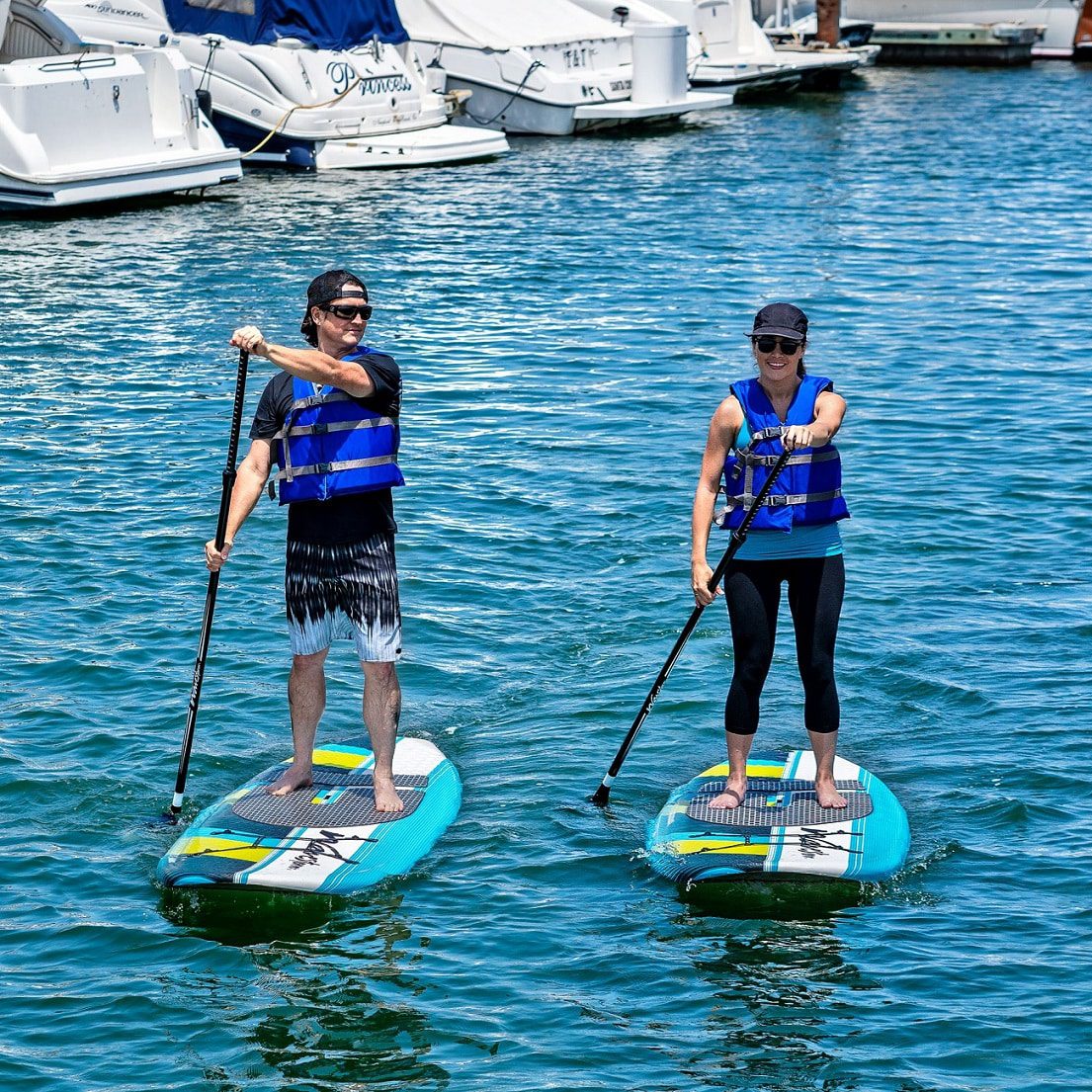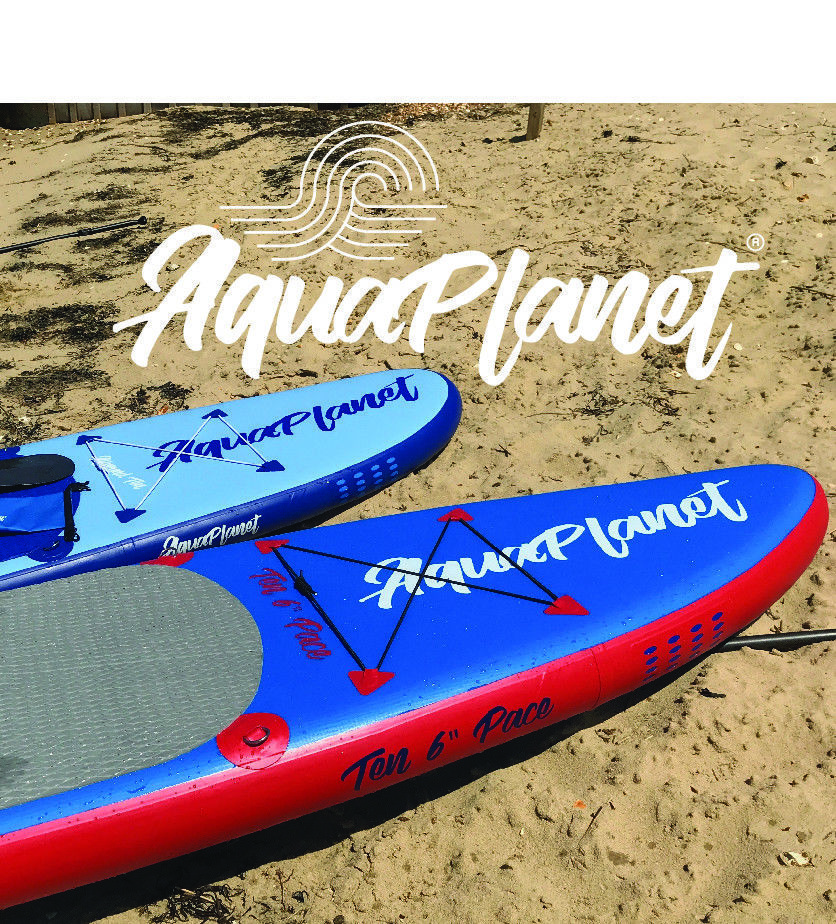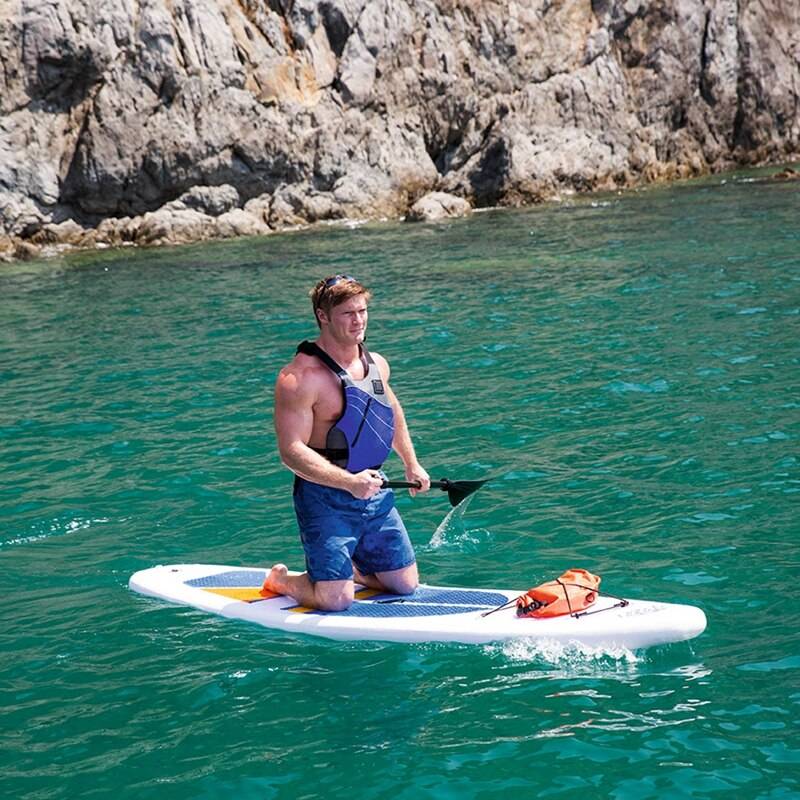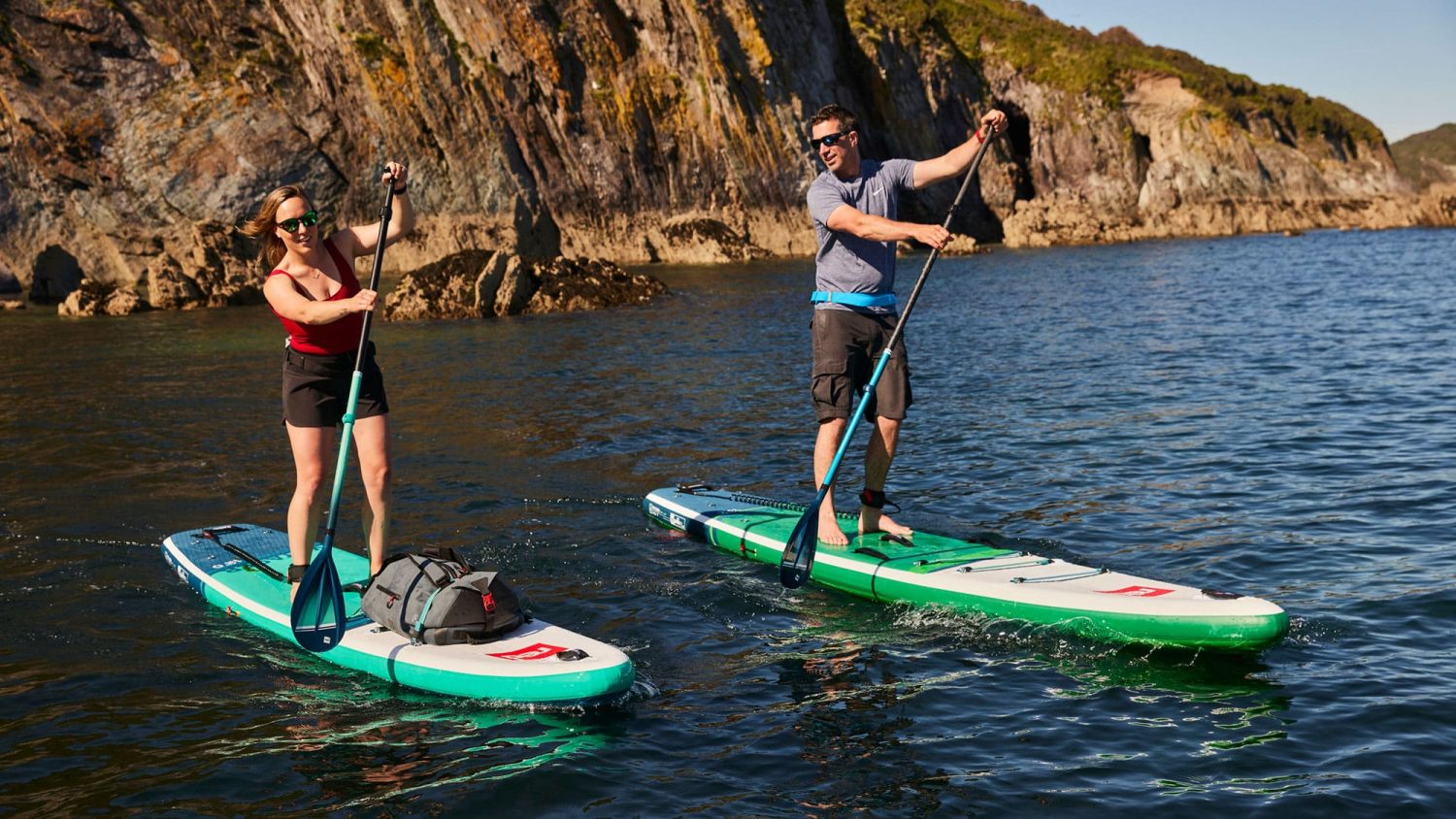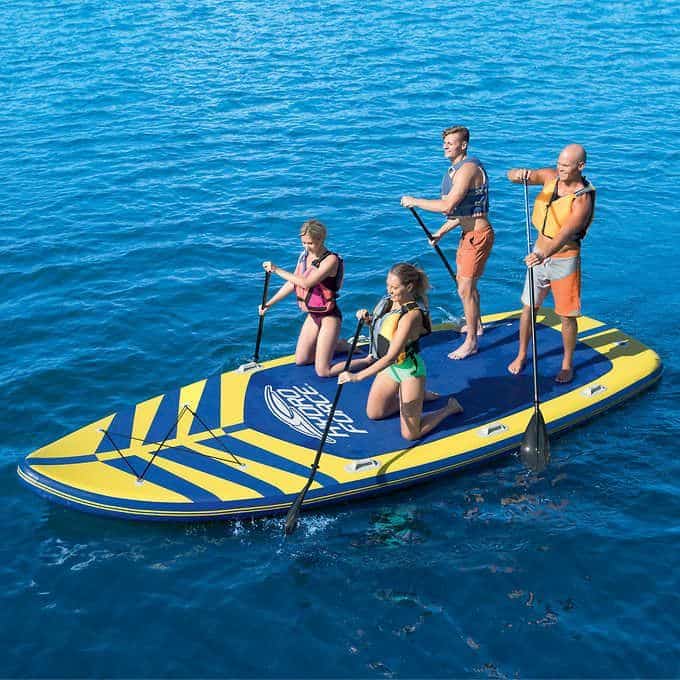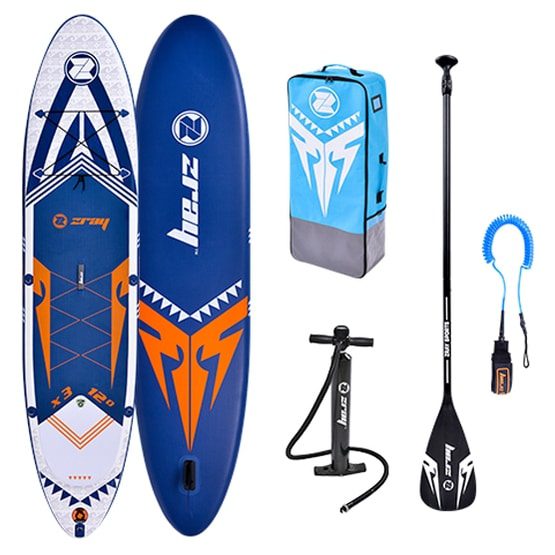Have you ever wondered about the weight limit for a SUP board? We are here to shed some light on this critical question in this article.
Whether you are a seasoned paddleboarder or a beginner, knowing the weight limit of a SUP board is crucial for a safe and enjoyable experience on the water.
So, let’s get right into it and explore the factors determining a SUP board’s weight limit.
Factors Affecting Weight Limit
Several factors come into play when determining the weight limit for a stand-up paddle (SUP) board. These factors can vary depending on the board design, material, dimensions, stability, and the rider’s skill level. Understanding these factors is crucial in choosing the right SUP board to support your weight and provide an enjoyable experience on the water.
Board Design
The design of a SUP board plays a significant role in its weight limit. Different board designs are intended for various purposes, such as surfing, touring, or racing. Each design is optimized to perform at its best under specific circumstances. For example, surf SUP boards usually have a lower weight limit to achieve better maneuverability on the waves, while touring or racing boards are designed to accommodate higher weights for long-distance paddling.
Board Material
The material used in constructing a SUP board can also affect its weight limit. Most SUP boards are made of either epoxy or inflatable materials. Epoxy boards are typically more rigid, providing better stability and weight-bearing capacity. On the other hand, inflatable boards can generally support lower weight limits due to their flexibility and lighter construction.
Board Dimensions
SUP board dimensions, including length, width, and thickness, directly impact its weight limit. Longer and broader boards have higher weight capacities, offering excellent stability and buoyancy. Thicker boards can also contribute to increased weight limits, providing additional volume and support for heavier riders. When choosing a SUP board, consider your weight and the board’s dimensions to ensure a suitable weight limit.
Stability
Stability is crucial for any SUP board, regardless of the rider’s weight. A stable board can enhance balance and confidence on the water, allowing riders to paddle comfortably. A board’s stability is determined by various factors, including its width, thickness, and design features such as hull shape and rocker profile. Boards with higher stability ratings typically have higher weight limits, as they are better equipped to support heavier riders without compromising performance.
Rider Skill Level
The rider’s skill level is another significant factor when considering weight limits. Beginners may require more stability and forgiveness when learning to paddle; therefore, choosing a board with a higher weight limit is recommended to support their progress. As riders become more experienced and confident, they can potentially opt for boards with lower weight limits that offer higher performance. Matching the weight limit with your skill level can ensure a safe and enjoyable paddling experience.
Understanding Weight Limit Categories
SUP boards are often categorized into different weight limits to guide riders. These weight limit categories, including beginner, intermediate, and advanced, help classify boards according to their intended use and rider capabilities.
Beginner Weight Limit
Boards with a beginner weight limit are typically designed for riders new to paddleboarding. They often have higher stability ratings and larger dimensions to offer better balance and confidence for beginners. Beginner weight limits range from around 200 pounds (90 kilograms) and above, providing ample support for novice riders to start their paddleboarding journey.
Intermediate Weight Limit
Intermediate weight limits cater to paddlers who have acquired some experience and skill in SUP. These boards balance stability and performance and are designed for riders who want to progress beyond the beginner level. Intermediate weight limits usually range from 200 to 250 pounds (90 to 113 kilograms), accommodating a more comprehensive range of riders with different skill levels and body weights.
Advanced Weight Limit
Advanced weight limits are typically found on high-performance SUP boards for experienced and skilled riders. These boards prioritize performance and maneuverability over stability, making them suitable for riders who paddle in challenging conditions or engage in competitive racing. Advanced weight limit boards often have weight capacities of 250 pounds (113 kilograms) and above, accommodating athletes and experienced paddlers seeking maximum speed and responsiveness.
This image is the property of onyxmotion.com.
Standard Weight Limits for SUP Boards
While weight limits vary among SUP board models and brands, some standard weight limits are associated with specific board lengths. Here are a few examples:
10′ SUP Board
A 10-foot SUP board is often considered a versatile option that can accommodate a wide range of riders. Depending on the design and construction, a 10-foot SUP board may have a weight limit of approximately 200 to 250 pounds (90 to 113 kilograms). These boards suit beginners or intermediate riders looking for stability and maneuverability.
11′ SUP Board
An 11-foot SUP board offers increased stability and the potential for higher weight limits. With its longer length and wider dimensions, an 11-foot SUP board can typically support weights ranging from 250 to 300 pounds (113 to 136 kilograms). These boards are popular choices for recreational paddling and touring, providing a balance between stability and performance.
12’6” SUP Board
A 12’6” SUP board is often favored by more experienced riders and those interested in long-distance touring or racing. These boards are designed for enhanced speed and versatility, and their weight limits commonly range from 250 to 350 pounds (113 to 159 kilograms). The increased length and narrower width of a 12’6” SUP board allow for efficient paddling and excellent tracking capabilities.
14′ SUP Board
14-foot SUP boards are commonly used for racing or expeditions, offering maximum speed and efficiency. These longer boards excel in open water conditions and can accommodate weight limits ranging from 300 to 400+ pounds (136 to 181+ kilograms). While 14-foot SUP boards are primarily designed for advanced riders, they can also suit heavier riders seeking high-performance options.
Factors to Consider When Choosing a SUP Board
Several factors should be considered when selecting a SUP board that meets your specific needs and weight limit. These factors include weight, rider skill level, intended use, board type, and dimensions.
Your Weight
Your body weight is essential in determining the appropriate SUP board weight limit. Knowing your weight can help narrow down the options and ensure that you choose a board that comfortably supports your body weight on the water. Selecting a board with a weight limit that exceeds your weight will provide stability and prevent potential performance issues.
Rider Skill Level
Considering your skill level is crucial in choosing a SUP board that matches your abilities. Beginner or intermediate riders may benefit from boards with higher weight limits that increase stability and forgiveness. Advanced riders, on the other hand, can explore boards with lower weight limits that prioritize speed, maneuverability, and more demanding performance.
Intended Use
Identifying your intended use for the SUP board is vital in selecting. Whether you plan to use the board for recreational paddling, surfing, touring, racing, or yoga, each activity may require specific design features and weight limits. Understanding your primary use will guide you towards the most suitable board type and weight limit.
Board Type
The type of SUP board you choose will significantly influence its weight limit. Consider whether you prefer a solid epoxy board or an inflatable board. Epoxy boards generally offer higher weight limits due to their rigidity and construction, while inflatable boards are more flexible and have lower weight capacities. Carefully evaluate the pros and cons of each type to find the best fit for your needs.
Board Dimensions
The dimensions of a SUP board, including length, width, and thickness, directly impact its weight limit. Longer and broader boards generally have higher weight capacities and better stability. Thicker boards can provide additional buoyancy and support, helping to increase the weight limit. Ensure the board’s dimensions suit your weight for a comfortable and enjoyable paddling experience.
This image is the property of paddlecamp.com.
Testing Weight Limit
Determining the weight limit of a SUP board can be achieved through two main methods: referring to the manufacturer’s recommendations and conducting personal testing.
Manufacturer’s Recommendations
SUP board manufacturers usually specify the weight limit for each board model. These recommendations are based on extensive testing and analysis of the board’s construction, design, and intended use. Consulting the manufacturer’s recommendations is a good starting point to understand the weight limits you should abide by to maintain optimal performance and safety.
Personal Testing
While manufacturer recommendations provide a general guideline, personal testing can offer more specific insights into a board’s weight limit. You can gauge how it handles additional load by gradually adding weight to the board and monitoring its performance and stability. Personal testing should be conducted cautiously and in controlled conditions to avoid potential damages or safety hazards.
Board Safety
Regardless of the weight limit, it is essential to prioritize safety when using a SUP board. Avoid exceeding the weight limit to maintain stability and performance, and avoid unnecessary risks. If you have any concerns or doubts about a board’s weight limit, it is always recommended to consult the manufacturer or a knowledgeable paddleboard expert for guidance.
Consequences of Exceeding Weight Limit
Exceeding the weight limit of a SUP board can lead to various unwanted consequences. Understanding the potential risks associated with overweight paddling is crucial to ensure both your safety and the board’s longevity.
Reduced Performance
Exceeding the weight limit can significantly impact the performance of a SUP board. The board may become less maneuverable, making turning or navigating through the water more challenging. Paddling speed and responsiveness may be compromised, resulting in a less enjoyable experience on the water.
Decreased Stability
Weight limits are designed to provide optimal stability for SUP boards. By exceeding the weight limit, the board’s stability can be compromised, leading to a less secure and more wobbly ride. This can affect your balance and confidence while paddling and increase the risk of falling into the water.
Risk of Damages or Breakage
Excessive weight on a SUP board can potentially exceed its structural capacity and lead to damage or breakage. Over time, the added load can strain the board’s materials, causing delamination, cracks, or complete failure. Continuously exceeding the weight limit can shorten the board’s lifespan and require expensive repairs or replacement.
Safety Concerns
A SUP board beyond its weight limit can pose safety risks for the rider and other water users. An unstable board due to overweight paddling increases the chances of accidents, collisions, or falling into the water. These risks can be hazardous in challenging conditions like strong winds, currents, or waves.
This image is the property of standuppaddleboardsreview.b-cdn.net.
Tips for Maximizing SUP Board Weight Limit
While it is essential to stay within the recommended weight limit for your SUP board, there are several tips you can follow to help maximize the board’s weight capacity and ensure a safe and enjoyable experience.
Proper Inflation
For inflatable SUP boards, proper inflation is vital to optimize their weight-bearing capacity. Follow the manufacturer’s guidelines and ensure the board is inflated to the specified pressure. Underinflated boards may have reduced stability and weight limits while overinflating can strain the board’s seams and materials.
Stance and Weight Distribution
Maintaining a proper stance and weight distribution can contribute to a SUP board’s stability and performance. Stand in the center of the board with your feet shoulder-width apart, maintaining balance and evenly distributing your weight. Avoid moving excessive weight too far forward or backward, as it can affect the board’s stability and lead to instability or capsizing.
Equipment and Gear
Consider the weight of your equipment and gear when determining the total load on the SUP board. Personal flotation devices, paddles, and other accessories can contribute to the overall weight that the board needs to accommodate. Be mindful of the combined weight to ensure it falls within the recommended limit.
Board Maintenance
Proper board maintenance is crucial for preserving a SUP board’s structural integrity and performance. Regularly inspect the board for any signs of damage or wear and address them promptly. Keep the board clean and store it properly to prevent unnecessary stress or exposure to harsh elements. By maintaining the board in good condition, you can ensure its longevity and optimal weight-bearing capacity.
FAQs
What happens if I exceed the weight limit?
Exceeding the weight limit of a SUP board can lead to several consequences, including reduced performance, decreased stability, increased risk of damages or breakage, and safety concerns. Staying within the recommended weight limit is essential to maintain the board’s optimal performance, safety, and longevity.
Can I use a SUP board with a lower weight limit?
Using a SUP board with a lower weight limit than your actual weight may compromise stability, performance, and safety. Choosing a board that comfortably accommodates your weight is generally recommended to ensure a stable and enjoyable paddling experience.
Is there a minimum weight limit for SUP boards?
While manufacturers for specific SUP board models typically define weight limits, there is no universally defined minimum weight limit. However, choosing a board that suits your weight is essential to maintain stability and proper performance on the water.
Can I adjust the weight limit of a SUP board?
The weight limit of a SUP board is determined by its design, construction, dimensions, and materials. It is impossible to adjust a board’s weight limit once it has been manufactured. However, you can ensure that you select a board with a suitable weight limit based on your weight and intended use to maximize safety and performance.
This image is the property of cdn.shopify.com.

